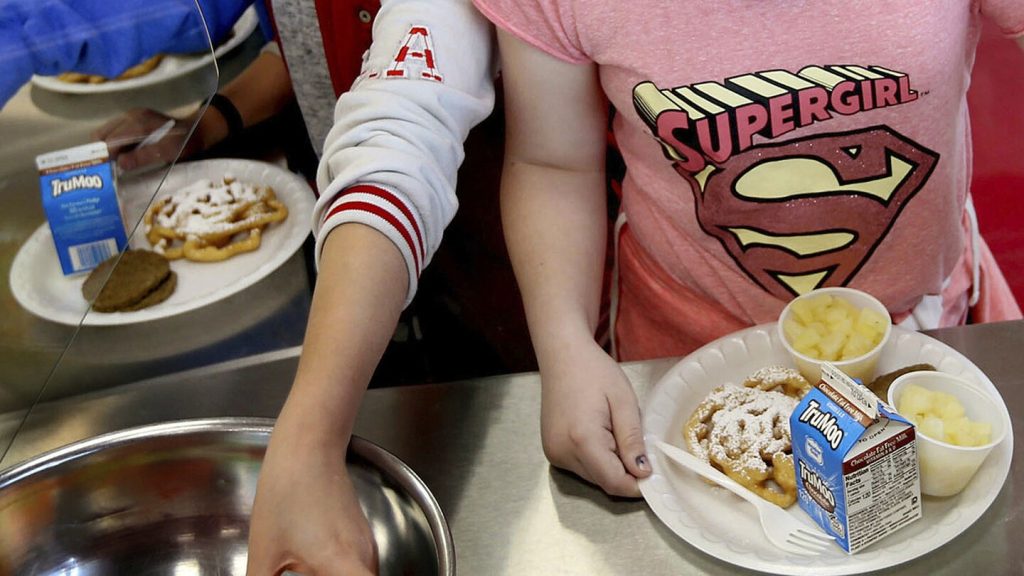The U.S. Department of Agriculture has announced a new policy that will eliminate processing fees for students eligible for free or reduced-price school meals, starting in the 2027-2028 school year. Currently, processing companies charge fees for each transaction, which can be as much as $3.25 or 4% to 5% of the total payment. This disproportionately affects families with lower incomes who cannot afford to load large sums in advance, leading to additional costs of up to 60 cents for every dollar paid for school lunches electronically. The decision by the USDA aims to lower costs for families with incomes under 185% of the federal poverty guidelines.
A recent report from the Consumer Financial Protection Bureau found that online school meal payments predominantly impact low-income families and collectively cost families over $100 million each year. Agriculture Secretary Tom Vilsack stated that the USDA and schools across the country are working towards the common goal of nourishing schoolchildren with healthy meals. While eliminating extra fees for lower-income households is a step in the right direction, Vilsack emphasized the importance of offering every child access to healthy school meals at no cost and continuing to work towards that goal with Congress.
School districts have been mandated by the USDA to inform families of their options since 2017, but parents still find it burdensome to pay fees to avoid processing charges by using cash or checks. Many families, like Joanna Roa, have found it inconvenient and expensive to pay such high fees for school meal transactions. Roa, a working parent with two school-aged children, decided to pack lunches for her son after seeing the exorbitant fees involved. Despite surplus funds allowing her school district to provide free school lunches for the past two years, this could change at any time, causing uncertainty for families.
A review of the 300 largest public school districts in the U.S. by the CFPB found that 87% of districts contract with payment processors, which charge an average of $2.37 or 4.4% of the total transaction each time money is added to a child’s account. The dominance of just three companies – MySchoolBucks, SchoolCafe, and LINQ Connect – in the market limits families’ ability to choose providers and negotiate fees. The complex company structures may prevent school districts from negotiating better rates, leading to higher costs for families. The agency emphasized the importance of avoiding harmful practices that may violate federal consumer protection laws in the school meal payment system.
The CFPB report highlights the challenges faced by low-income families in accessing healthy school meals without incurring additional fees. The decision by the USDA to eliminate processing fees for free or reduced-price school meal recipients is a step towards addressing these disparities and lowering costs for families with lower incomes. By working towards providing all children with access to nutritious meals at no cost, the USDA aims to support the well-being and academic success of schoolchildren across the country. This new policy will go into effect in the 2027-2028 school year, benefitting families with incomes under 185% of the federal poverty guidelines.


